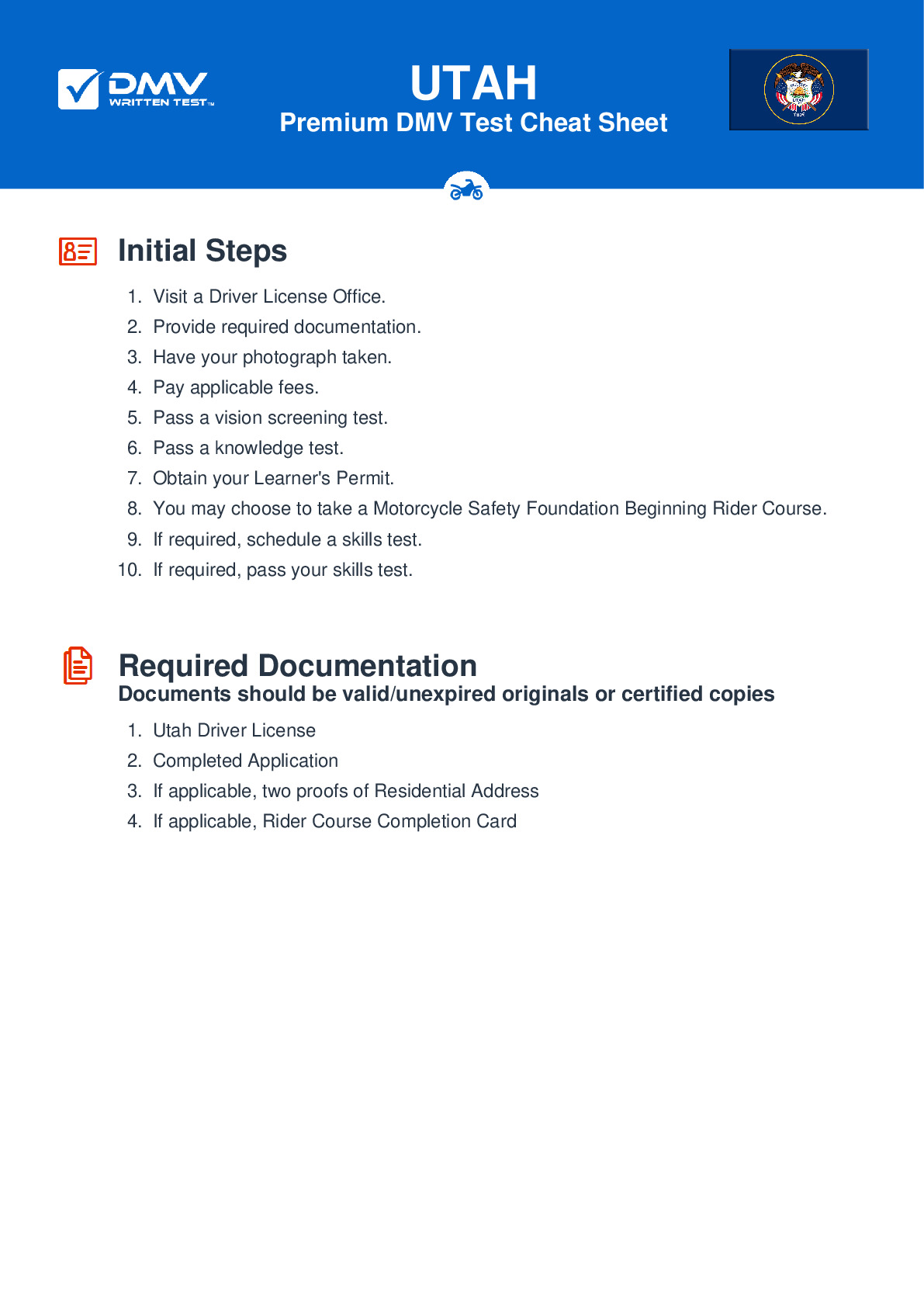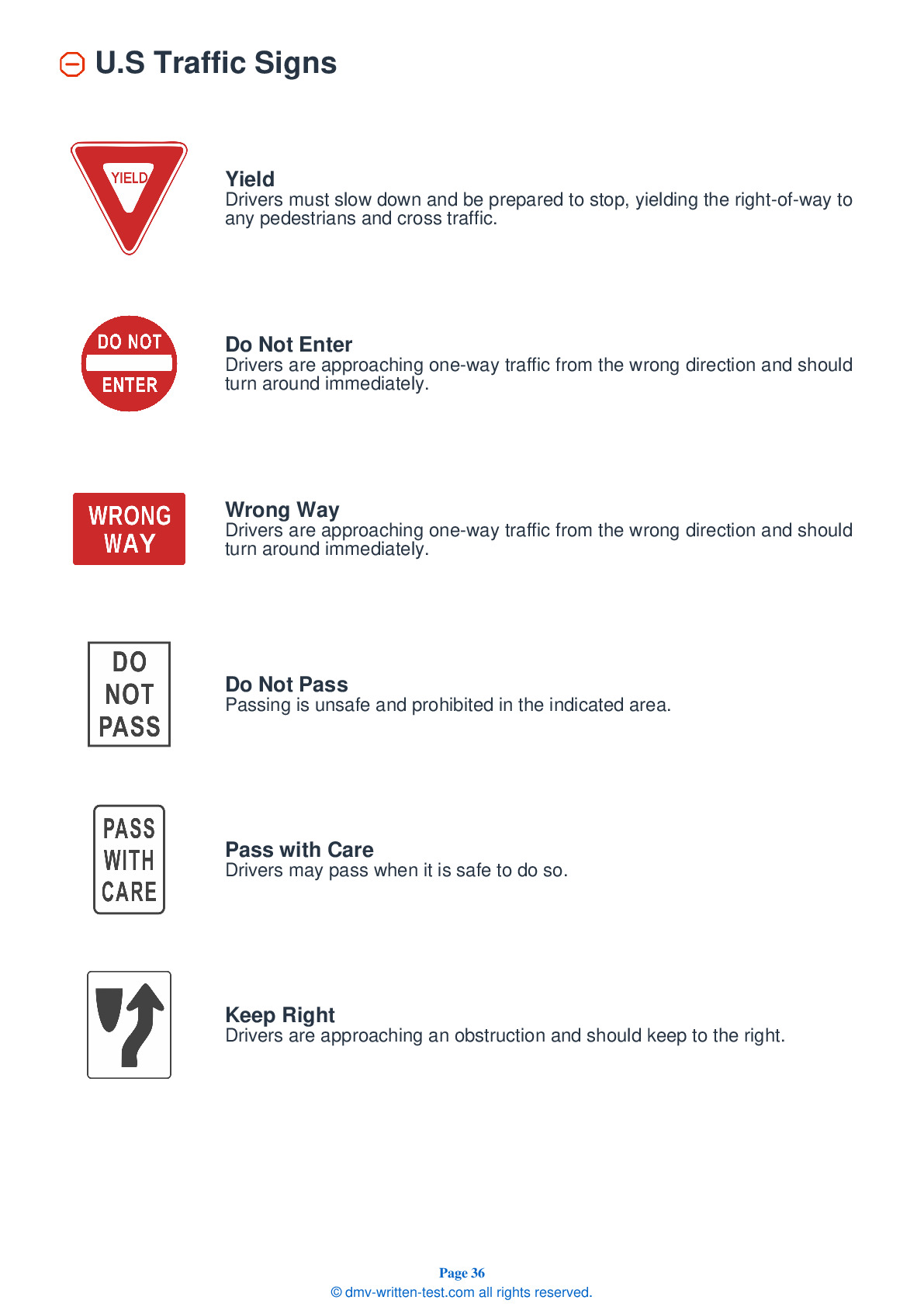2025 Utah Motorcycle Permit Test 13
The following questions are from real DMV written motorcycle permit tests. These are some of the actual permit questions you will face in Utah when getting your motorcycle learners permit. Each motorcycle theory practice test question has three answer choices. Select one answer for each question and select "grade this section." You can find this button at the bottom of the drivers license quiz. For a complete list of questions and answers for Utah please visit https://cheat-sheets.dmv-written-test.com/en/utah/motorcycle.
Number of Tests
Number of Question
Passing Score
19. Maximum front-line braking is accomplished by:
Explanation
Maximum straight-line braking is accomplished by fully applying both the front and rear brakes without locking either wheel. You should always use both brakes every time you slow or stop.
20. What does this signal mean?

Explanation
Hand signals are an important part of communication when riding in groups. This hand signal means "follow me."
21. When riding at night, a motorcyclist should maintain a minimum following distance of:
Explanation
Because it is more difficult to see and judge distances in the dark than in daylight, you should maintain an expanded following distance of at least three seconds when riding at night. It may take you longer than usual to realize the vehicle in front of you has stopped and you may need additional time to slow or stop to avoid hitting the vehicle.
22. When crossing angled railroad tracks, it is usually safest to approach the tracks:
Explanation
In general, it is safest to simply proceed straight in your lane when crossing angled railroad tracks. Turning to approach tracks at a right angle can be dangerous because it may send you traveling into another lane.
23. When riding a three-wheeled motorcycle through a curve, it is best to:
Explanation
The cornering characteristics of a three-wheeled motorcycle or a motorcycle with a sidecar differ from those of a two-wheeled motorcycle. The best path for a three-wheeler to take through a curve may not actually follow the curve. For example, you may need to move from the outside of the curve to the inside of the curve before straightening out your path.
24. When being passed, do not move into the portion of the lane farthest from the passing vehicle because:
Explanation
When being passed, you should not ride on the side of your lane that is farthest from the passing vehicle. Doing so may tempt the driver to return to your lane before there is actually room for them to do so safely.
25. When both braking and swerving must be done to avoid an unexpected hazard, a rider should:
Explanation




